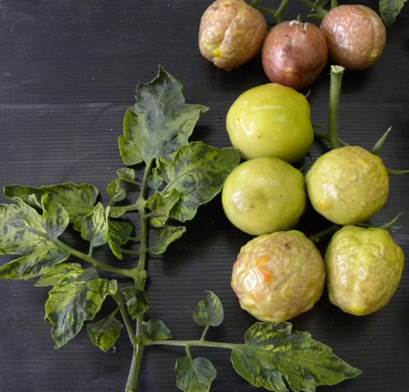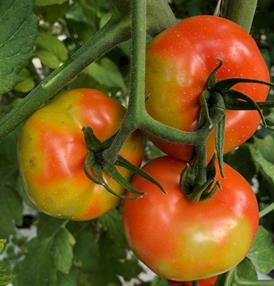
Tomato brown rugose fruit virus
| Primefact number | Edition | Published | Author |
|---|---|---|---|
| 1695 | First | Jul 2019 | Plant Biosecurity and Product Integrity |


Tomato brown rugose fruit virus is an exotic plant disease. This disease is a serious threat to Australia’s vegetable industry. Tomato brown rugose fruit virus (ToBRFV) is an emerging virus, spreading rapidly since its first detection in the Middle East in 2015. Australia is testing imported tomato and capsicum seeds as part of a national response.
Notifiable status
Tomato brown rugose fruit virus is a notifiable plant disease in NSW.
All notifiable plant pests and diseases must be reported within 1 working day. You can report notifiable plant pests and diseases by one of the following methods:
- Call the Exotic Plant Pest Hotline 1800 084 881
- Email biosecurity@dpi.nsw.gov.au with a clear photo and your contact details
- Complete an online form
A full list of notifiable plant pests and diseases can be found in Schedule 2 of the NSW Biosecurity Act 2015.
Description
ToBRFV is a plant virus (Tobamovirus) of tomatoes and capsicums.
In tomatoes, leaves show symptoms of discolouration, mosaic and mottling patterns (Figure 1) or reduced leaf size. The tomato fruit presents yellowing (Figure 2) or brown areas and wrinkled (rugose) skin (Figure 1). Fruit may also be deformed and have an irregular maturation.
In capsicums, symptoms include leaf deformities, yellowing and mosaic patterns. The capsicum fruit are deformed, with visible yellowing or brown areas or green stripes. Different plant varieties can present different symptoms.
Lifecycle
The lifecycle of ToBRFV is dependent on the living plant host. Following infection, the virus hijacks the cells of the host plant and uses them to replicate.
Spread
ToBRFV is transmitted through propagative material (seeds, plants for planting, grafts, cuttings) and mechanically by direct plant to plant contact, contaminated tools, hands, clothes, trellis wires, greenhouse benches and planting trays.
The virus can remain viable in seed, plant waste and contaminated soil for months or even years.
Host range
Tomato and capsicum species are known to be the primary hosts of ToBRFV. Laboratory testing has thus far not shown potato or eggplant to be hosts. No commercial varieties of tomato are known to have resistance to ToBRFV.
Damage
ToBRFV damages host plant cells leading to death of the foliage and unmarketable fruit. Infected crops may be up to 100% affected.
Once a crop is infected the only control action is destroying all affected plants.
Distribution
ToBRFV was first found in 2014 in Israel, but wasn’t formally identified until 2015 in Jordan. Having a scattered global distribution, this virus has spread to China, Germany, Italy, Mexico, Turkey, UK, and USA (California).
Actions to minimise risk
Put in place biosecurity best practice actions to prevent entry, establishment and spread of pests and diseases:
- practise “Come clean, Go clean”
- ensure all staff and visitors are instructed in and adhere to your business management hygiene requirements
- source propagation material of a known high health status from reputable suppliers
- monitor your crop regularly
- keep records
- isolate tomato and capsicum plants or areas with suspect symptoms to prevent further spread.
It is also encouraged not to bring store bought tomatoes or capsicums into contact with any tomato or capsicum growing farms.

